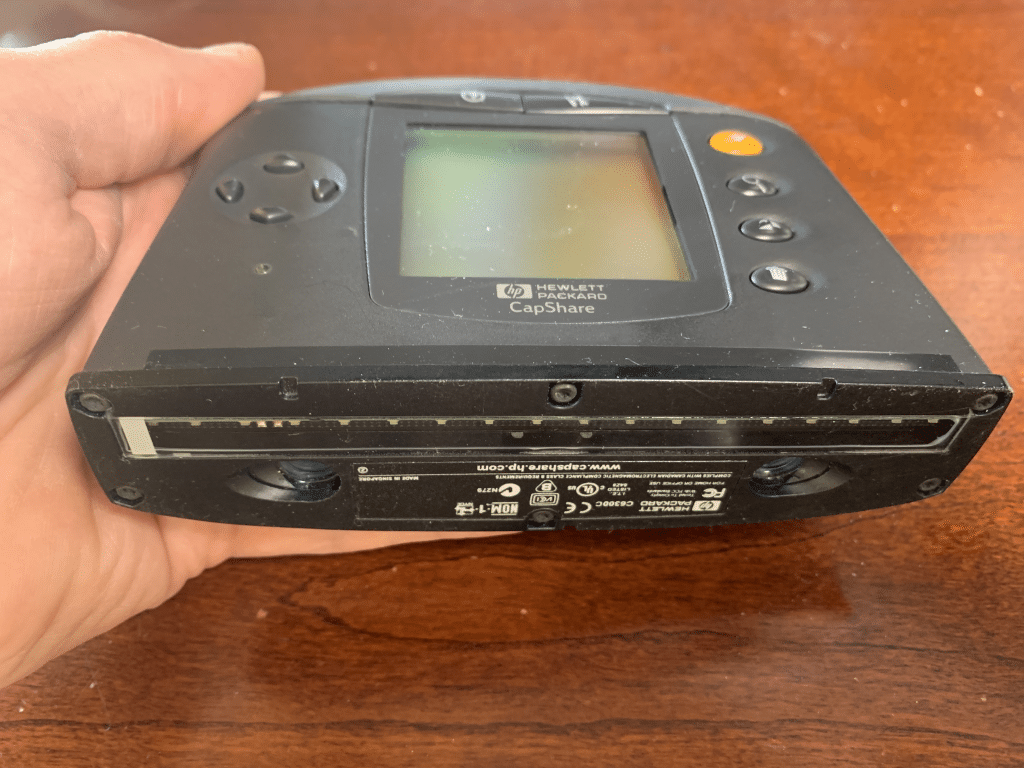HP CapShare: How a failed product yielded huge revenue
HP’s CapShare hand-held scanner is a great example of patents that come from problems solved on they way to the vision – not the vision itself.
Patents can be vehicles for spinning out technologies.
When any company is exploring a new space, they encounter problems that need to be solved. In many cases, other companies could use these solutions, and the solutions can be packaged up into a product and sold.
In today’s software world, it is easy to stitch together different products, like a website hosting service, a chatbot service, a Customer Relationship Manager, an electronic signature platform, a payment service, video streaming services, and on and on. The same is true of virtually any technology: we can buy pieces from different sources to combine into the solution we are attempting to sell.
In some cases, the tools are not available, so we have to create our own. The existing solutions may not have the feature set we need or the performance that we desire, or there may not be anything on the market that suits our purposes. So we have to put engineering resources into building the missing part.
HP’s CapShare hand-held scanner
Hewlett Packard developed the CapShare product in the 1990’s. This was a handheld scanner that you held over a book or piece of paper, then moved the device up and down across the page to scan. This was a small, battery operated scanner that you could throw in your bag and take with you.

The CapShare product had a small but conventional scanning sensor that had its own light source and sensor, just like the flatbed scanners of the time. The engineering problems they needed to solve were two: how to stitch together the scanned image into a bigger image of the page, and how to track the motion of the device across the page.
With a conventional flatbed scanner, the paper is held steady while the sensor is moved very precisely underneath the page. Because the movements are very well controlled, creating the image is easy. Not so with a handheld device.
With a handheld device, the user might move the scanner in an arc, or up and down or left and right. The design had to allow for any direction of movement.
In the mid-1990’s, the technology for detecting motion across a surface was limited to the mechanical mouse. Back in the day, all of the mice had a big rubber-coated ball that moved on your mouse pad. The balls would stick, and you would slam the mouse on the table instead of cleaning it, but they were also kind of big and bulky. This technology would not work for the CapShare.
HP Labs spent a good deal of energy developing a special sensor for the CapShare. There were existing non-contact sensors at the time, but they all had certain limitations. Most of them required a special mouse pad, for example, that had little grids on it. These grids were detected by a mouse sensor. This type of non-contact sensor would not be good enough for the CapShare.
What HP Labs developed was a non-contact motion sensor that sensed movement across any type of paper in two directions.
This sensor became the sensor used in all optical computer mice.
HP made hundreds of millions of dollars from this sensor, which was essentially spun out of a failed R&D project. The CapShare was a disaster as a commercial product but yielded one of the big milestone advances in user interface technology. Each of the billions of desktop computers sold for 20 years each had this sensor in it.
This story is a great example of a success for a patented invention, but it teaches us several other lessons.
In the grind of building a product, engineers solve lots of problems. One of the best places to look for good inventions is to ask where the engineering team had to spend a lot of effort or what were the hardest problems they had to overcome. Chances are that other companies will run across similar problems and could re-use your solution.
When you find something that another company could use, get a patent on it.
For companies who do not compete with you, you have the option to package up the solution and sell it to them. In HP’s example, they began making the optical sensor and selling it in their own mice, but also selling the chip to competitors as well.
You also have the option to prevent other companies from using your solution when you have a patent.
In HP’s CapShare example, any competitor would have to design around HP’s sensor by using the old, clunky mechanical mouse ball technology. Maybe they could get a solution that worked, but the solution would be far inferior to HP’s solution with the non-contact optical sensor.
The point here is that HP could control the market for the hand held scanner with the sensor patent, and they probably did not need a patent on the “grand idea” of a hand held scanner. This is yet another example of how a patent that comes later in the engineering process can still control the market.
